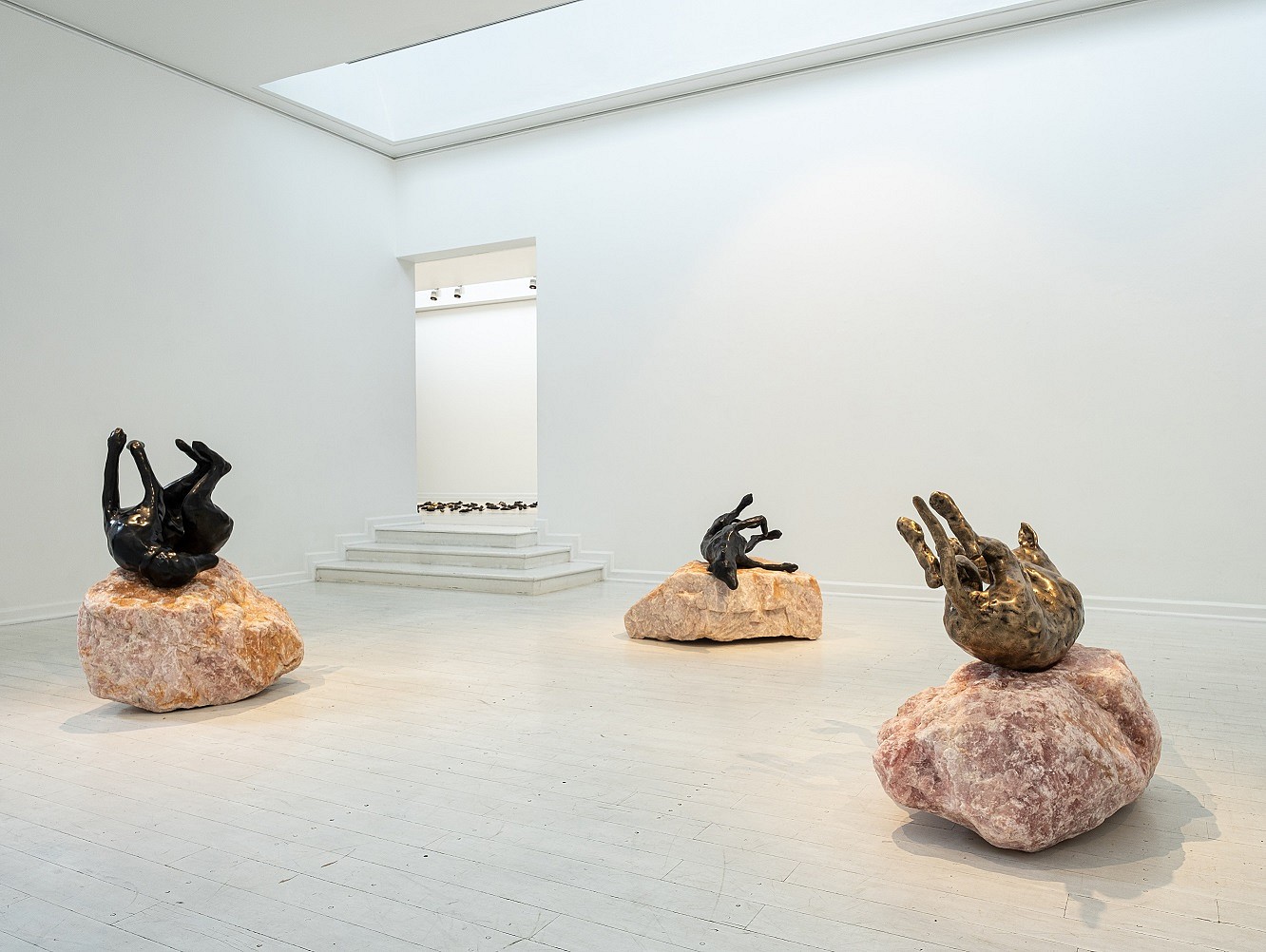PRESS RELEASE

NICOLA BAILEY - The Tenderness of Ghosts
May 5 – Jun 4, 2022
Everard Read Johannesburg is pleased to present The tenderness of ghosts, a solo exhibition by Nicola Bailey.
My practice engages with ideas of interspecies relationships within the domestic environment, exploring the intimacy and tenderness between companion species and making visible our entangled existence. I have chosen to work primarily in bronze sculpture for this exhibition, because I feel the material acts as an evocative contrast, to the ephemeral nature of life and the natural world. I have also made use of the mediums of drawing, and painting in order to deepen my practice as a multi- disciplinary artist, and to engage with the different sensibilities each material offers.
My sculpture is rooted in European traditions of sculpture-making, and I derive my inspiration from various sources including prehistoric and Ancient. I am fascinated by the remains of these civilisations, especially those artefacts produced exclusively from natural materials which point to bygone value systems of interconnectivity, nature culture, and deep ecology, values which have since been largely obliterated by post Enlightenment Western thought and the privileging of reason, science, and industrial commerce, above all else. My work seeks to allude back to humble domestic objects and vessels; talismans and totems, or sacred votive objects, each of which carry a universally recognizable significance, I feel, in spite of the time and space which now separates us from their original (unknown) craftsmen and women.
My sculpture process starts with the creation of small waxes, imbuing the objects with the sense of touch and care. The subjects of my work are often the co –beings in my life: dogs; cats and birds in my garden, who are my muses and companions. My artwork explores entanglements between humans and other species. Through Intra-action (Karen Barard) transformative encounters are possible, generating new modes of coexistence and breaking down the classifications between “human” and “non-human others”. “We are not outside observers of the world,” as Karen Barard reminds us, “Rather we are part of the world in its ongoing Intra-activity”.2003.
The exhibition title The tenderness of ghosts is also the title of the three life-sized dog sculptures. These are made of bronze and rose quartz and allude to my concerns with mass extinction, and a foreboding sense of dread about future ‘ghost species’. Through these sculptures my wish is to prompt viewers to ask whether, given the Earth’s current ecological trajectory, the only animals that will remain are the ones we live with and the ones we eat. If so, will the only remaining examples of the lost natural world, one day be, the art which artists once created?
Bronze is rich in alchemical properties and has a powerful story-legacy in myth and traditional beliefs (including African). It has historically been seen as a conductor of energy between individuals and the Spirit realm. Rose quartz too is imbued with a potent story-legacy. Its pink hues are said to represent feminine-gendered qualities, and the unconditional love of the heart Chakra in the Hindu Yogic and Buddhist Tantric traditions. The Ancient Mesopotamians: Greeks, Egyptians and Romans also prized the stone for its purported healing powers.
My keen interest in the long lingering legacies of these natural materials, combined with their awesome geological properties (these metals and crystals are literally thousands of years old), serve as a counterpoint, with regards to the nature of humanity, for humans can only exist in a fragment of that time frame. The choice of natural earth materials in The tenderness of ghosts represent thousands of years as part of a geological time frame. They belong for me in ‘deep time’. Geological time frames are often unimaginable and by creating work like this I would like to include the notion of “deep time” and the possibility that there may be an earth that has and will thrives without humans. These materials offer a permanence and weightiness I would like to contribute to, personally and as a species that I can imagine a future for.
After one of my dogs brought me a gift of dead garden birds he had killed, I began making the sculptures of birds in wax. They started as memorials to the fleeting moments of life which I felt the birds embodied and the beauty of nature. Birds exist mostly in the air, in the liminal space between the earth and sky. In various folklores, myths, and traditional belief systems, they are portrayed as messengers between the earthly and heavenly realms. In traditional Southern African Bantu cultures, they are agents both of fertility and of only the purest Ancestral spirits. By casting my birds in bronze, I hope to encourage the viewer to juxtapose this heavy alloy material with notions of air, breath, and lightness which we usually associate with birds. The still and silent 108 bird site specific installation Constellation of Silence, in which each has been transformed into a solid, grounded being, devoid of their usual magical ‘lightness’ of flight, is a warning to us all, of the rapid disappearance of many bird species, as a consequence of anthropogenic climate change.
As above, so below are 11 small oil paintings on board as part of the installation of the bronze birds, Constellation of Silence. The bird paintings are installed on a shelf above the still grounded bronze birds in order to offer another aspect of interconnectiveness, as above, so below, as within, so without, as the universe, so the soul.
Nicola Bailey
Cape Town 2022



